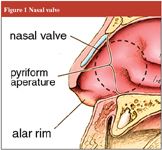Relieving nasal obstructions in neonates
A guide for pediatricians when suction or standard intubation isn't enough to reestablish a clear airway among newborns with nasal occlusions.
Neonates are obligate nasal breathers, making nasal obstructions a potential life-threatening emergency. Regardless of the cause, initial management is based on the child's ability to breathe. First, the obstruction must be relieved acutely, which often requires an alternative path such as the use of an oral airway or intubation. Once a diagnosis is made, three general treatment approaches can be pursued.
Nasal anatomy: A refresher
To understand the nose and nasal obstruction more completely, we need to review some basic embryology.

Newborns' upturned noses and large tongues allow them to suck and breathe at the same time. During feeding, the posterior tongue pushes on the soft palate forming a seal ("veloglossal sphincter"), which makes mouth breathing cumbersome. Therefore, nasal breathing ensures feeding without aspiration.
Neonates typically remain obligate nasal breathers until about 2 to 6 months of age, depending on the child. If they cannot breathe through their nose, they will experience an inability to feed and can be subject to respiratory distress or even death.
Differential

